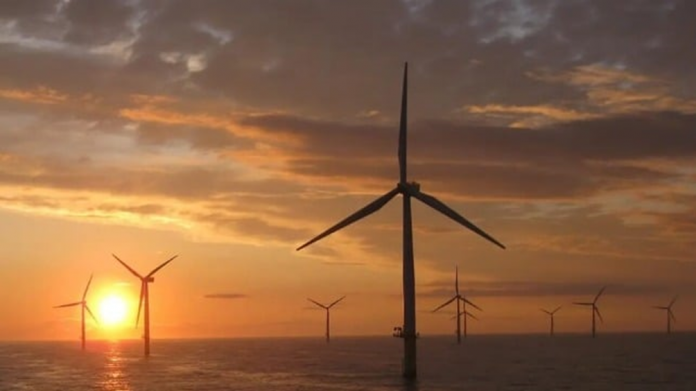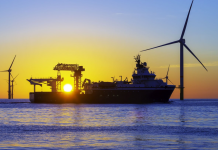
A plan has been launched seeking to form partnerships and guide the UK in the next level of development for its offshore energy sector. The plan was developed by Maritime UK, a trade organization representing all sectors of the maritime industries, in partnership with Renewable UK, the trade association for wind and offshore energy, and supported by the Association of British Ports.
“The offshore wind industry is a major UK success story, with the largest operational fleet in Europe, the world’s four biggest individual windfarms, and the highest ambition of energy produced by 2030,” said the UK’s Minister of State in the new Department for Energy Security and Net Zero, Rt Hon Graham Stuart MP. “I, therefore, welcome the publication of the Maritime UK offshore wind plan, which highlights the numerous opportunities on offer for the UK’s maritime industries at both existing and new offshore wind farms.”
The UK set a record in 2022 for the amount of power generated offshore. The country has 43 offshore wind farms with 2,652 turbines in operation and an installed capacity of nearly 13.7 GW. Yet the government has ambitious plans calling for a fourfold increase in power generated offshore rising from the current approximately 10 percent to a level long-term where there would be more power from offshore homes than is used today in all the country’s homes.
The UK’s Offshore Renewable Energy (ORE) Catapult, the technology innovation and research center for offshore renewable energy, identifies a significant opportunity for the maritime industry as the offshore power sector grows. They point to estimates that 149 Surface Operation Vessels (SOVs) will be needed to serve rapidly expanding offshore wind developments in Europe by 2030, and up to 309 by 2050. The plan points to the opportunities for building vessels as well as ensuring further growth in UK ports as centers for manufacturing and assembly for offshore developments.
A separate task force report also highlights significant needs in the ports and infrastructure. The Floating Wind Offshore Wind Taskforce says up to 11 ports around the UK will need to be transformed as fast as possible into new industrial hubs to enable the roll-out of floating offshore wind at scale. They are calling for investing nearly $5 billion in port upgrades needed to enable turbines with hub heights taller than 520 feet and their giant floating bases to be manufactured and assembled in coastal locations.
The ports task force says initially a minimum of three to five ports will be needed in Scotland to install turbines onto the floating bases, with a further two ports needed to service the Celtic Sea. Additionally, at least four other UK ports will need to be revitalized for manufacturing massive steel and concrete components for floating foundations. More ships and bigger cranes will also be required in the construction process for both floating and fixed-foundation offshore wind developers.
Among the many technical hurdles that remain according to UK Research and Innovation, a non-departmental government-supported initiative, is the need to improve the efficiency and reliability of turbines and reduce costs. They also point to the challenge of finding ways to handle the intermittency of supply while also ensuring that the development of the offshore sector does not damage the environment and has the support of local communities.
“We are at a pivotal time in our industry and this report reflects the importance of acting now for both the benefit of the industry and the environment,” said Nigel Quinn, CEO of Bibby Marine. Part of the Bibby Line Group, the company which operates SOVs and offshore accommodations, partnered with the groups on the launch of the Offshore Wind Plan.
The new plan identifies priority areas for collaboration to ensure rapid growth in offshore wind energy generation. It includes recommendations for how the maritime sector, the offshore wind sector, and governments can work together to deliver maximum economic benefit from the growth of offshore wind across the maritime supply chain in sectors like ports, shipbuilding, crewing, and professional services.
“The maritime sector already plays a key role in our collective efforts to deliver a cleaner and more sustainable future by the middle of this century,” said Robin Mortimer, Chair of Maritime UK. “The Offshore Wind Plan sets out how delivering energy security through growing offshore wind can drive economic growth and job creation across the country through the maritime supply chain.”
As part of the collaboration called for in the plan, they make recommendations for rewarding higher UK supply chain content in offshore wind projects. They are also calling for reforming the planning system to enable green projects to be delivered quicker and encouraging lenders and investors to finance the required vessels and infrastructure.
They point to the need to work collaboratively to transport and rejuvenate ports as well as enabling manufacturing capabilities. They believe these steps are key to meeting the government’s target of 50 GW of power generated by offshore wind projects by 2050.
Source – THE MARITIME EXECUTIVE




